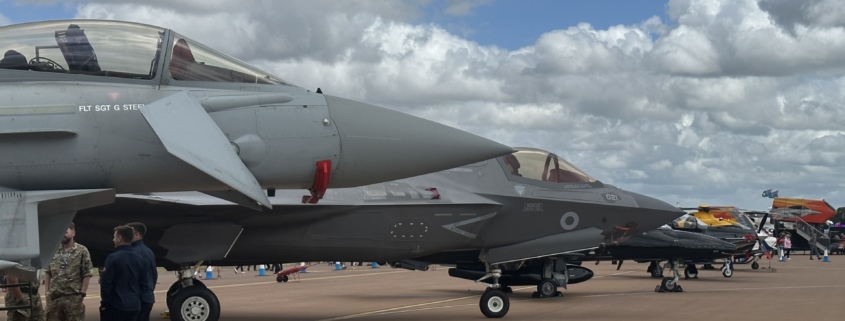Aluminium Takes Off
Did you catch the VE Day flypast? This formation of planes that served in World War II included a Lancaster bomber, Typhoons and a Voyager. Many of these historic aeroplanes were partially or predominantly constructed from aluminium. However, this isn’t an aviation material consigned to the history books. If you are jetting off to foreign lands this summer, aluminium will be helping your flight take off.
Iconic Planes Made From Aluminium
Isn’t it amazing that engineers worked out how to make aircraft fly? Especially so, when you learn that nearly 10 tonnes of aluminium alloy was used to make every Lancaster bomber. Aluminium alloy was widely used for the fuselage and parts of many wartime planes. So much so, that the British public were encouraged to donate tin cans and saucepans* to support the war effort. These donations were recycled to help build aircraft including the Spitfire. This iconic flyer was constructed with aluminium wings and the plane’s skin was wrapped in sheet aluminium.
A highlight of any airshow is the Red Arrows. Their skillful pilots put on an awe-inspiring performance with formation flying, tricks and a colourful trail. The Red Arrow planes are the Hawk aircraft, which came into RAF service in 1976. This also features an aluminium alloy fuselage.
Concorde has to be one of the most recognised planes of all time and the structural airframe was an aluminium alloy. Although no longer in service, 16 of these plans remain on public view, 7 of which are in the UK. The nearest to us is seen by millions of passengers travelling to or from Heathrow Airport. Have you spotted it?
Modern commercial planes are still constructed from a high percentage of aluminium. Around 80% of a Boeing 737, the type of aircraft that you might board for your summer holidays, is aluminium. It’s used in the fuselage, wings, engine components, doors, seats, cockpit and landing gear.
Why is Aluminium Used in the Aerospace Industry?
Early aircraft include the Ford Motor Company’s ‘Tin Goose’, which was formed from corrugated aluminium. That was developed in 1925, so this year marks its centenary. So, aluminium has been lifting us to the skies for 100 years, but why is it used?
There are multiple reasons why aluminium is a practical material for the aerospace industry. Firstly, it is lightweight, which supports fuel efficiency and load capacity, yet also incredibly strong. It holds its shape, can withstand the pressures of flight and is resistant to corrosion. However, it is further enhanced by combining pure aluminium with other metals and chemicals to form alloys.
Aluminium alloys have a lower density, which reduces the total weight of the aircraft further. Other alloys are heat treated to improve weight-bearing components or parts exposed to vibration, chemicals and extreme temperatures.
The ideal aluminium alloys ensure that commercial aircraft continue to make multiple flights a day for many years. However, when an aircraft is decommissioned, the aluminium components can be recovered and recycled.
Aluminium Hangers & Memorials
It’s not just aeroplanes that are made from aluminium. This versatile metal was used in the construction of the De Havilland flight hangar** in Hatfield in 1955. This building is part of British aeronautical history, as it was used to assemble and test the Comet jet airliner. Clad in aluminium, it is now a Grade 2 listed building which has been repurposed as a community leisure centre.
To prove that aluminium is reusable, the metal from a recovered Handley Page Halifax Bomber was given a second life. It provided a fitting aluminium roof for a memorial to the Bomber Command in Green Park, London. The building houses an impressive bronze statue of members of the bomber command.
Specialists in the Design, Fabrication & Finish of Aluminium Extrusion
If you’ve read this and our other articles, you’ll know that we have a fascination with the potential of aluminium in many applications. This metal is essential for items that surround us in everyday life.
As UK specialists in the design, fabrication and finish of extruded aluminium, we work with designers and manufacturers to provide bespoke solutions and tailored parts. Whether you make windows to look out at the sky or are preparing to fly passengers in the sky, we have the on-site facilities, experienced engineers, and customer support to create and assemble aluminium parts. To discuss your requirements, give us a call 01296 431292 or email sales@salesmade.co.uk
Source:

